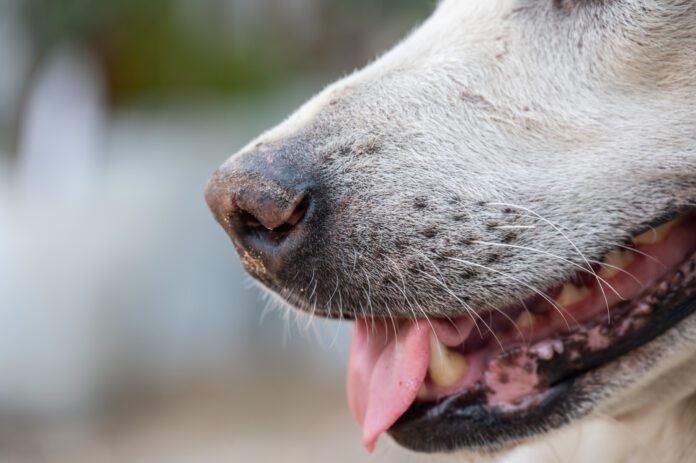Why Do Canine Have Whiskers and Ought to You Lower Them?
While you consider whiskers, you in all probability image cats, however canines additionally possess a set of whiskers on their muzzle, cheeks, and above their eyes that serve essential particular functions.
Whiskers, also referred to as vibrissae, play a vital position in your canine’s notion of the world round him and hint again to his breed’s ancestry. For instance, hounds and terriers have longer, extra pronounced whiskers, whereas different breeds with out the genes for looking and monitoring could have shorter or less-prominent whiskers.
Whereas whiskers could differ in look throughout breeds, all canines have them and understanding their operate will enable you to make knowledgeable choices about their care and reply questions resembling do you have to lower your canine’s whiskers (no!).
Why Do Canine Have Whiskers?
Whiskers are delicate and embedded in follicles that hook up with nerves, permitting canines to detect even small actions and modifications of their setting. The position of whiskers consists of:
- Navigation. Whiskers assist canines navigate their environment by offering details about objects, obstacles, and potential threats. That is notably essential in shut quarters as a result of canines’ sense of sight is best fitted to longer distances. Supplemental vibrissae extensions have even been discovered to help blind canines
- Sensory consciousness. Whiskers are delicate to the touch and strain, detecting even the faintest breeze or the presence of close by objects, enabling canines to react shortly to modifications of their setting.
- Detecting prey. Of their primal days, whiskers had been essential for looking. They helped canines detect prey, observe their actions, and keep away from obstacles at midnight.
- Expressing emotion. Together with physique posture, tail place, and vocalizations, whiskers play a delicate position in expressing a canine’s feelings. For instance, when a canine is relaxed, their whiskers usually relaxation in a pure place. If a canine is curious, whiskers could change into extra erect or twitch. When a canine feels threatened or aggressive, their whiskers may flare out sideways or downward, indicating discomfort or a readiness to defend themselves.
- Safety. Whiskers can function a protecting mechanism. For instance, these close to your canine’s eyes could set off a reflexive blink when they’re touched, serving to to defend the eyes from potential hurt.
Can You Lower Canine Whiskers?
Whereas your canine’s whiskers will develop again should you lower them, it’s essential to keep in mind that you’re compromising their sensory skills. Trimming whiskers may tempt you for aesthetic causes, particularly should you’re displaying your canine and wish to fulfill particular necessities.
“For those who contact his whiskers, your canine will typically reflexively blink due to the data the whisker transmitted to the mind: One thing is close to the face, defend the attention! Whiskers serve an essential sensory and protecting operate in your canine,” says Syracuse, N.Y., veterinarian and Complete Canine Journal contributor Dr. Andrea Lee. This sensory space is especially concentrated within the areas related to whiskers, which highlights their significance for a canine’s neurological operate.
In case your canine’s whiskers have gotten overly lengthy or matted, seek the advice of with knowledgeable groomer who can trim them rigorously with out compromising their performance. Your veterinarian may also present recommendation on find out how to keep your canine’s whiskers and maintain them clear and wholesome.


